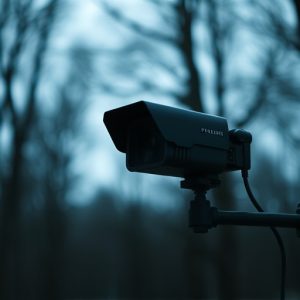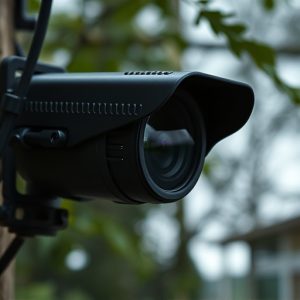Unveiling Hidden Cameras: Smartphone Tools for Safe Home Monitoring
Hidden cameras for home monitoring have advanced significantly, raising privacy concerns. Smartphone…….
Hidden cameras for home monitoring have advanced significantly, raising privacy concerns. Smartphones now offer specialized apps that detect hidden camera lenses using AI and image processing, providing users with real-time alerts and enhanced privacy protection. These app-based technologies leverage machine learning and Computer Vision to distinguish between legitimate objects and spy lenses, ensuring effective security measures while navigating legal guidelines regarding home surveillance.
Hidden cameras have become increasingly prevalent, raising concerns about privacy. With advancements in technology, smartphones are now powerful tools for detecting these clandestine devices. This article explores the growing trend of using mobile phones to identify hidden camera lenses. We delve into the rising concern over spy cameras for home monitoring and examine app-based solutions leveraging computer vision and AI. Additionally, we discuss legal and ethical considerations surrounding their use.
- Understanding Hidden Cameras and Their Prevalence
- The Role of Smartphones in Camera Detection
- App-Based Solutions for Spy Lens Identification
- Advanced Techniques: AI and Computer Vision
- Legal and Ethical Considerations for Home Monitoring
Understanding Hidden Cameras and Their Prevalence
Hidden cameras, often used for home monitoring or surveillance, have become increasingly prevalent in today’s world. These tiny devices can be easily concealed within everyday objects, making them hard to detect. With advancements in technology, they offer a sense of security, but their presence also raises privacy concerns. Many people are unaware of the potential risks associated with these hidden devices, which can capture sensitive information without consent.
Smartphones have now become powerful tools to detect such hidden cameras. There are apps available that utilize phone lenses and advanced image processing algorithms to identify suspicious camera lenses, helping users stay vigilant in public spaces or their own homes. This technology empowers individuals to take control of their privacy and be aware of potential security breaches, especially in areas where surveillance might go unnoticed.
The Role of Smartphones in Camera Detection
In today’s digital age, smartphones have become an indispensable tool, transforming the way we interact with technology. One innovative application is their ability to detect hidden cameras, a feature that has significant implications for home monitoring and security. With just a few simple steps, users can convert their mobile devices into powerful tools to uncover covert recording devices, such as hidden cameras, enhancing personal privacy and peace of mind.
Through specialized apps and advanced sensors, smartphones can analyze visual inputs, identifying unique characteristics associated with spy cameras. These apps leverage image processing algorithms to detect subtle patterns and anomalies in real-time, enabling users to quickly identify potential threats or privacy breaches. This technology is particularly useful for individuals seeking to safeguard their homes from hidden cameras, ensuring a safer and more secure living environment.
App-Based Solutions for Spy Lens Identification
In today’s digital age, where smartphones have become an integral part of our daily lives, innovative apps are emerging to address unique challenges like identifying hidden cameras for home monitoring. Several applications leverage the power of mobile devices and their advanced sensors to detect spy camera lenses. These app-based solutions utilize various techniques, such as analyzing light patterns, infrared signatures, and digital image processing, to identify potential hidden surveillance equipment.
By integrating AI algorithms, these apps can scan environments in real time, alerting users to potential threats like covert recording devices. This technology empowers individuals to be more vigilant and proactive in protecting their privacy. Whether it’s for enhanced home security or ensuring a safe public space, app-based solutions offer a convenient and accessible way to counter the growing concern of hidden cameras, enabling users to stay one step ahead of potential privacy breaches.
Advanced Techniques: AI and Computer Vision
In the advanced realm of spy camera lens detection, Artificial Intelligence (AI) and Computer Vision play a pivotal role in revolutionizing home monitoring. These cutting-edge technologies empower users to identify hidden cameras with unprecedented accuracy. By leveraging machine learning algorithms, AI systems can analyze visual data from smartphone cameras to detect subtle patterns and anomalies that might indicate the presence of covert surveillance devices.
Computer Vision techniques, integrated into mobile applications, enable real-time processing of images and videos. This allows users to actively scan their surroundings for potential hidden cameras, enhancing privacy and security measures. With AI-driven analysis, these tools can even distinguish between legitimate objects and strategically placed spy lenses, ensuring that home monitoring remains effective against evolving threats from Hidden Cameras for Home Monitoring.
Legal and Ethical Considerations for Home Monitoring
When discussing hidden cameras for home monitoring, it’s crucial to address the legal and ethical considerations that come into play. While many individuals opt for spy camera lenses for increased security and peace of mind, the use of such devices raises significant privacy concerns. It is essential to understand that secretly observing someone without their consent can infringe upon their right to privacy, which is a fundamental legal protection.
In many jurisdictions, there are strict laws regarding hidden cameras in homes. These regulations often mandate explicit consent from all parties involved and clearly define what constitutes acceptable monitoring practices. Ethical guidelines also emphasize the importance of transparency, ensuring that residents are aware of any surveillance systems present in their living spaces. Respecting privacy rights is not just a legal obligation but also fosters trust within communities, promoting a safer environment for everyone.
In a world where technology advances rapidly, hidden cameras pose a significant concern for home security. The article has explored various methods to combat this issue, from understanding the prevalence of spy cameras and their detection using smartphones, to app-based solutions and advanced AI techniques. With the right tools and knowledge, individuals can now empower themselves to identify potential hidden cameras, ensuring a safer and more private living environment. As home monitoring evolves, staying informed about these technologies is crucial to safeguarding personal spaces in today’s digital age.


